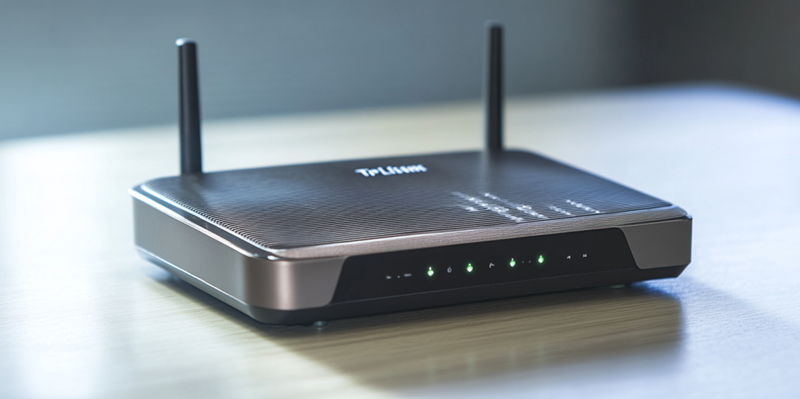A significant security vulnerability has been discovered in TP-Link VN020-F3v(T) routers with firmware version TT_V6.2.1021. This flaw, identified as CVE-2024-11237, allows attackers to remotely take over the routers, leading to potential Denial of Service (DoS) and Remote Code Execution (RCE) attacks. These attacks can severely impact network functionality and compromise data security by allowing unauthorized access and control over network devices.
The identified vulnerability is known as a stack-based buffer overflow, categorized under CWE-121. This flaw allows remote attackers to exploit the router by sending specially crafted DHCP DISCOVER packets to its DHCP server, which operates on UDP port 67. The critical aspect of this vulnerability is that it does not require prior authentication, thereby making it an accessible and significant threat. Exploitation involves the use of either excessively long hostnames or manipulated vendor-specific options within DHCP packets. These malformed inputs result in the router mishandling the data and causing a buffer overflow, which stems from the inherent processing flaws within the device’s firmware. The proprietary nature of the firmware unfortunately limits detailed examination and access to specific implementation details.
Vulnerability Identification and Exploitation Method
The vulnerability within TP-Link VN020-F3v(T) routers can be exploited through a process that involves sending specially crafted DHCP DISCOVER packets to the device’s DHCP server on UDP port 67. Attackers leverage excessively long hostnames or manipulated vendor-specific options within these packets to initiate the exploitation process without requiring prior authentication. This makes the flaw particularly dangerous as it greatly simplifies the attack process. The inherent flaw stems from how these routers process specific inputs, resulting in a buffer overflow due to the mishandling of data.
Experts have identified that the key issue originates from the incorrect processing of DHCP packets that contain oversized or malformed inputs. This buffer overflow condition occurs when the router improperly verifies the lengths of DHCP options, such as long hostnames exceeding 127 characters or mismatched lengths in vendor-specific options. Consequently, the router’s memory gets corrupted, leading to potential crashes and the risk of remote code execution. Although the proprietary firmware restricts full analysis, researchers used behavioral observation and black-box testing to determine the vulnerability’s impact.
Impact and Affected Regions
The primary consequences of exploiting this vulnerability include significant risks such as the router becoming unresponsive (Denial of Service) and enabling remote code execution capabilities. These outcomes pose severe threats to network control and data integrity, highlighting the importance of addressing this flaw promptly. Notably, users under specific ISPs like Tunisie Telecom and Topnet, primarily located in Algeria and Morocco, are particularly affected due to the widespread deployment of the vulnerable routers in these regions.
The vulnerability’s implications extend beyond individual inconveniences, as it compromises overall network stability. Network devices failing to assign IP addresses due to router malfunction can amplify disruptions across multiple devices and services dependent on continuous network access. Attackers taking advantage of the low complexity required to exploit this flaw could potentially control or disrupt numerous systems. Therefore, it is imperative to address this vulnerability urgently to mitigate its profound impact on affected networks.
Memory Corruption and Stack Overflow
Symptomatic analysis of this vulnerability reveals that the routers experience memory corruption leading to stack overflows. Critical memory locations, including the router’s return address, get overwritten, causing instability and opening the door to potential remote code execution. This memory corruption can significantly impact network operations, deteriorating the reliability and performance of the affected routers. Such compromised routers can result in substantial network downtime, leading to widespread inconvenience for users who rely on multiple devices for their daily activities.
The low complexity involved in exploiting this vulnerability—the attack does not require sophisticated techniques or tools—makes it an attractive target for hackers. The risk of attack is elevated by the ease with which malicious individuals can deploy the exploit to gain unauthorized control or disrupt network services. Given the potential aftermath of such exploits, including severe downtime and compromised security, addressing this vulnerability through immediate mitigation measures is essential to protect affected systems.
Interim Mitigation Measures
In the absence of an official patch from TP-Link, users and network administrators must proactively implement mitigation strategies to protect their networks. One effective measure includes disabling the DHCP server feature within the router’s settings if it is not critical to network operations. By turning off this service, the potential attack surface can be reduced, limiting the exposure to the vulnerability. Another recommended strategy involves filtering DHCP traffic at the network edge, blocking malicious packets from reaching the vulnerable routers.
For those who can, switching to alternative router models that are not susceptible to this specific vulnerability presents an immediate and effective defense. These interim measures are crucial in safeguarding networks until an official patch is released by TP-Link. Implementing these strategies promptly can help mitigate risks associated with this vulnerability, protecting sensitive data and maintaining network functionality.
Recommendations for Users and Network Administrators
A major security vulnerability has been identified in TP-Link VN020-F3v(T) routers with firmware version TT_V6.2.1021, documented as CVE-2024-11237. This flaw enables attackers to remotely compromise the routers, resulting in potential Denial of Service (DoS) and Remote Code Execution (RCE) attacks. These types of assaults can significantly damage network functionality and jeopardize data security by permitting unauthorized access and control over network devices.
Classified as a stack-based buffer overflow and listed under CWE-121, this vulnerability can be exploited by remote attackers through the router’s DHCP server on UDP port 67. Exploitation involves sending specially crafted DHCP DISCOVER packets with either excessively long hostnames or manipulated vendor-specific options. These malformed packets lead to improper data handling by the router, causing a buffer overflow due to inherent firmware processing flaws. The critical factor here is that no prior authentication is required, making this a substantial threat. The proprietary nature of the firmware restricts detailed analysis and prevents full access to specific implementation details.

